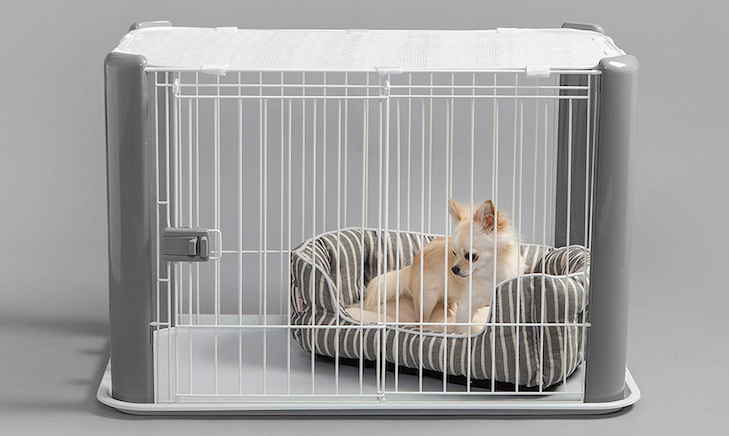Properly crate training puppies will pay big dividends for adult dogs | Pet Peeves
I was talking to a pet owner the other day about their five-month-old puppy. This is a large breed dog, so it was pretty big for a five-month-old puppy. The owners were concerned that the puppy had a urinary tract infection because it was going in the house even though they took him out frequently.
So, we did a urinalysis on the puppy and discovered that there were no signs of a urinary tract infection. Everything was completely normal. What was going on? This puppy was going on potty pads that it had been originally trained on, but it was also going in other areas of the house. It was really getting too old for this.
I asked the owners if they had ever crate trained the dog. Immediately they told me they put him in a crate at bedtime and he does like his crate. This is a good start, but this is not going to get him to be consistent about not having accidents in the house. They readily admitted that he never has an accident in the crate and is able to hold it all night.

One reason for this is that dogs do not like to go in their beds. Having an accident in the crate is punishment enough for a puppy. This aversion to going in the crate can be used to your benefit in the training process. Keeping a puppy in a kennel or pet carrier when you cannot spend one on one time with him is known as crate training.
If you are not giving him one on one attention, he should be sitting in a kennel. If you are on the computer or washing dishes and he has the opportunity to wander away from you then he can have an accident. He should only have free roaming privileges when you are there to watch for signs of needing to go out.
The crate should not be the main place your pet stays. I must emphasize this because in today's fast paced world there is the temptation to use the crate to excess. Time in the crate during the day should be limited to two or at most four hours at a time. Most of the pet's time should be spent interacting with the owners so that it will grow up well socialized.
Latest Pet Peeves columns
How you can be proactive in preventing wild animal invasions in your home | Pet Peeves
That COVID puppy you got may now have separation anxiety. Here's how to help.
If your pet gets aggressive at the vet, try these tips to keep everyone safe
Help! My 11-week-old golden retriever won't stop itching his hind leg
While training, it helps to feed the puppy on a schedule. Then you can take him out right after he eats and walk him for at least 15 to 30 minutes. This is the optimum length of time for the ingested food to stimulate a bowel movement. When he has a BM in the grass, leave it there and praise him so that he knows this is where he is supposed to go. If he has an accident inside, scold him and pick up the stool and carry it outside. Place it in the grass and show him so he will know this is where he is supposed to be going.
Always verbally praise him when you see him go outside in the grass. Often, pet owners supplement this with a small treat. This is very helpful, but keep in mind that treats tend to get out of hand and before we know it our pets are overweight. Once they get the housebreaking down, you can back off on treats. Putting the effort into training at an early age will pay big dividends. Dogs are much happier and experience less conflict if properly trained as puppies.
This article originally appeared on Northwest Florida Daily News: Crate training dogs as puppies can set them up for happy adult lives

